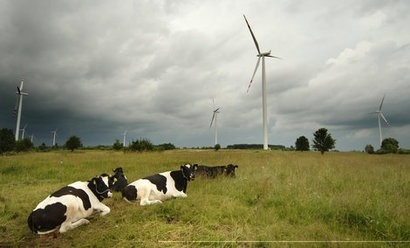
The report, entitled Towering Inferno, is the latest in a series analysing the root causes, impact and mitigation of wind turbine downtime events. While fires are an infrequent occurrence in the global wind energy industry, almost every manufacturer and operator has highlighted the inherent fire risk involved in the operation of modern wind turbines. Although such incidents are outnumbered by the loss of blades and gearboxes, the majority of fires incur a dual financial and reputational impact on a project and its stakeholders. There is also the clear potential for fires to spread and cause a larger environmental incident.
Despite the increasing use of fire suppression throughout the industry, turbine fire incidents typically result in the total or near-total loss of a multi-million dollar asset. GCube estimates that a wind turbine fire and its associated downtime will cost a project owner a total of $4.5 million on average. This financial impact is exacerbated by long-term reputational damage, not only leading to strained relationships with investors and OEMs, but also affecting public perception of safety and reliability standards in the industry at large. While the 300,000-strong international fleet of wind turbines sees just 50 turbine fires each year (a rate of 1:6000), media scrutiny driven by the anti-wind lobby has resulted in a disproportionate amount of negative national and international news coverage.
Concerns about the safety of wind turbines have been fuelled further by recorded incidents of bush fires sparked by burning debris from turbine fires in high-risk locations such as South Australia and California. Similarly, as the number of projects increases in remote, forested regions of North America and Europe, so too does the risk of consequential forest fires.
These factors combined underscore a requirement for the industry to adopt a more rigorous approach, both to preventative maintenance procedure and the implementation of active fire protection, detection and suppression systems. The Towering Inferno report, released today at the EWEA conference in Paris, seeks to promote industry collaboration by quantifying both the financial and wider market impact of a turbine fire, using a combination of proprietary claims data and publicly available news sources.
The analysis is combined with a breakdown of the internal and external root causes of a turbine fire – from lightning to human error - suggestions for best-practice deployment of both passive and active mitigation measures, and extensive interviews with claims specialist Renewable Energy Loss Adjusters (RELA) and fire suppression expert Firetrace International. The report also includes unique recommendations for wind farm operators in hot, dry and forested environments worldwide.
“While the vast majority of renewable energy losses escape the attention of the international media, it seems that, every few weeks, a turbine fire makes the headlines” said Jatin Sharma, Head of Business Development at GCube and author of Towering Inferno. “For the owners, operators and insurers of wind farms, the thought of seeing a multi-million dollar asset go up in flames is already a sobering one. For the incident to subsequently be broadcast around the world is the stuff of nightmares.”
Mr Sharma added that the industry needs to address the causes and consequences of a turbine fire and recognise that it affects each company in the industry rather than ‘affecting our competitors’. The sector cannot allow a handful of torched assets to become a symbol of an inability of businesses to work together.
Towering Inferno follows Breaking Blades and Grinding Gearboxes in GCube’s industry-first series of claims reports entitled Global Trends in Wind Turbine Downtime Events. In July of this year, the specialist underwriter released Transformers: Age of Breakdown, exploring the impact and consequences of transformer failure on the broader renewable energy industry.
For additional information:

